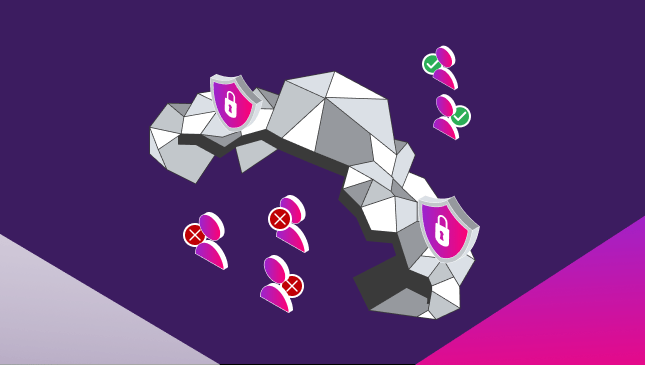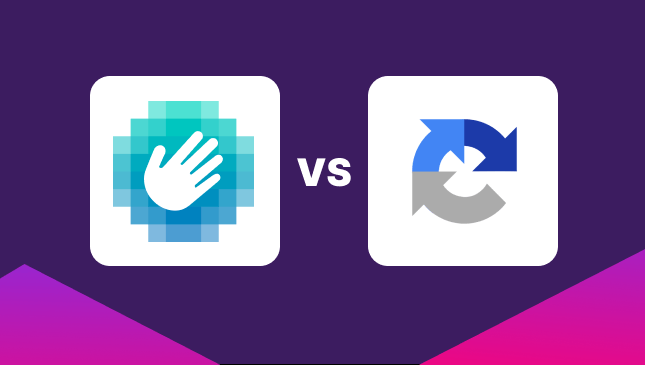How to Spot Bot Traffic in Google Analytics (and Fix It)
Sanja Trajcheva
|Marketing | April 10, 2023

The issue of bot traffic on Google Ads and other paid campaigns is one that has become well-known in recent years. And with Elon Musk raising the issue of bots on Twitter this year, it’s become an issue that is now in the public eye.
Thanks to Google Analytics, spotting bot traffic is not impossible. However, identifying what is going on is not so straightforward. There are many different types of bots, some good, some bad, and understanding which to block can be tricky.
As a digital marketer, you’ve probably heard a lot about bot traffic and the need to block it. But how do you spot it in Google Analytics? What is this bot traffic even doing on your website? And, probably most importantly, how can you stop bot traffic from doing whatever bad stuff it’s trying to do?
The definition of bot traffic
Bots are automated scripts that perform processes and tasks on the internet. These can be many and varied tasks, from collecting data for search results or research tools to scraping your content, spamming up your comments, or clicking on your paid ad campaigns.
As it has been found that an average of 40% of internet traffic is automated, i.e., bots, bot traffic is actually something that is hard to avoid.
In some cases, we want bots to crawl our websites. For example, your website wouldn’t appear on the Google search results pages if it wasn’t for bots. And your keyword research also wouldn’t work so well if there were no bots.
These good bots are the type that you don’t want to block. However, you might want to exclude them from your Google Analytics data.
But some bots cause all sorts of problems. Spam bots, spiders and crawling bots, carding bots, and more all mess up your site traffic data, skew your marketing analytics, and more.
Read more about bot traffic in this guide…
Identify bot traffic in Google Analytics
To identify bot traffic in Google Analytics, there are several tell-tale signs that depend on the types of bot visitors you have.
1. Traffic spikes
Surges in site traffic don’t always indicate bots; after all, some businesses experience random traffic surges from a viral social media post, referral by an influencer, or something else. But if none of these apply… It is often a very obvious signal that you’ve been visited by some form of bot traffic. This is especially true if you also experience some of the unusual metrics listed below.
2. Unusual metrics
If your site is seeing higher-than-average bounce rates, low session times, or a high percentage of single-page views, this is another common sign of bot traffic. BUT… This can also mean that your pages are slow loading or offer a poor user experience, so before you start screaming ‘bot!’ take a look at the fundamentals.
3. Strange behaviors
Probably the most obvious sign that you’re experiencing bot traffic is when you see all the spam comments on your site, the declined card transactions, or the leads from nonsense email addresses. An increase in these non-human style behaviors is a common sign that bots are messing with your site.
4. Location ‘Not Set’
Look closely at your site visitors, and the location and OS are usually specified. However, bot visitors don’t always have their location set, which does show in your Analytics dashboard. If you’ve seen high traffic and you suspect bots, take a look at the geo-locations.
Find out more about using Google Analytics in their user guide
Do I need to block or exclude Analytics bot data?
Much of the Analytics data you see will include crawls from bots such as research tools (e.g., AhrefsBot or SEMrushbot-CT) or indexing for search engines, for example, DuckDuckGo, Bing, Yandex, et al.
These definitely fall into the good bot category and ones that you’re better off excluding from your analytics rather than blocking.
When it comes to blocking bad bot activity, it’s often a case of adding known bad bot traffic to your exclusion list.
So how do you create exclusions and blocklists?
How to exclude bots from Google Analytics?
There are four main ways to exclude bot activity from your Analytics dashboard.
1. Use the standard bot filtering option in Google Analytics.
Go to Admin > View Section > View Settings – Tick the box marked Bot Filtering ‘Exclude all hits from known bots and spiders.’
This will (obviously) remove all bot activity from your data. Note that this means the data is removed, and the bots are not blocked.
2. Create a custom View and exclude specific bots from your data. To do this, go to:
Admin > View and click the blue ‘Create View’ button. You’ll be asked to choose a name for your new view. Make sure that the Bot Filtering box is NOT checked.
You can then add your own custom filters. To do this, under your new custom view, go to Filters.
You can then choose predefined filters or custom filters.
Add your IP addresses, hostnames, ISP details, or any other information you want to each filter. You’ll need to verify the filter before you apply it to see how it would adjust your current data.
3. Use the referral exclusion list.
Admin > Property tab > Tracking Info > Referral Exclusion List
This allows you to remove certain domains from your analytics data, especially those that seem to provide SEO spam or ghost spam.
Input the domains you want to exclude and save the filter.
4. Exclude bot activity from your existing Analytics data.
If you want to see how your historical website traffic looks without bot traffic, you can also add a filter easily.
From your Analytics home page, go to:
Audience > Overview > Click on ‘Add Segment’ > ‘New Segment’

Name your new segment and then on the side panel, go to ‘Conditions’ and then choose the ‘Include/Exclude’ drop down. You want to choose ‘Exclude’.
Change the tabs to ‘Source’ and ‘Matches regex’, then input the domains you’ve identified as being bot traffic.

Click save, and your filter is saved, and the existing bot data will be excluded from Analytics.
What do these solutions do?
Removing bot traffic from Google Analytics will give you a clearer picture of your traffic data and allow you to get more insight into how much of your web traffic is genuine.
Although it can be useful to remove this data from your Analytics, it won’t stop actual bot traffic on your website or ad campaigns.
When it comes to removing bad bot activity from your website or ad campaigns, there is no substitute for using click fraud prevention.
CHEQ Essentials uses the most advanced processes to block bad bot traffic in real time. This means that click fraud traffic, such as click farms or other non-human traffic, cannot click on your PPC ads.
But what about organic or direct bots, DDoS attacks, or spam bot traffic?
Our new Bot Zapping solution offers protection for WordPress sites, letting the good bots in and keeping the bad bots out.
By identifying bot traffic in real-time, CHEQ Essentials filters out the malicious or spam traffic – and also lets the real human customers in too.











